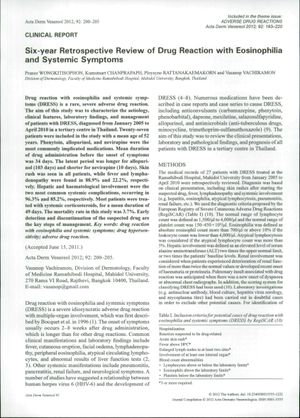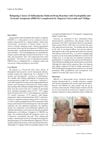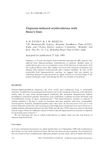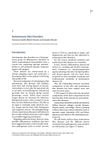Six-Year Retrospective Review of Drug Reaction with Eosinophilia and Systemic Symptoms
January 2012
in “
Acta dermato-venereologica
”

TLDR Early detection and stopping the drug are key to managing DRESS, and careful monitoring is important due to possible severe reactions.
The retrospective study reviewed 27 patients with Drug Reaction with Eosinophilia and Systemic Symptoms (DRESS) at a tertiary center in Thailand from January 2005 to April 2010. The mean age was 52 years, and the drugs most commonly causing DRESS were phenytoin, allopurinol, and nevirapine. Symptoms typically appeared 34 days after drug exposure, with skin rash, fever, and lymphadenopathy being common. Hepatic and hematological complications were frequent, and systemic corticosteroids were the main treatment over an average of 49 days. The mortality rate was 3.7%. The study concluded that early detection and drug discontinuation are crucial in managing DRESS, and highlighted the need for careful monitoring due to the potential for rapid or delayed hypersensitivity reactions, especially with allopurinol and nevirapine. Despite its small sample size and retrospective nature, the study shed light on the management and outcomes of DRESS.



